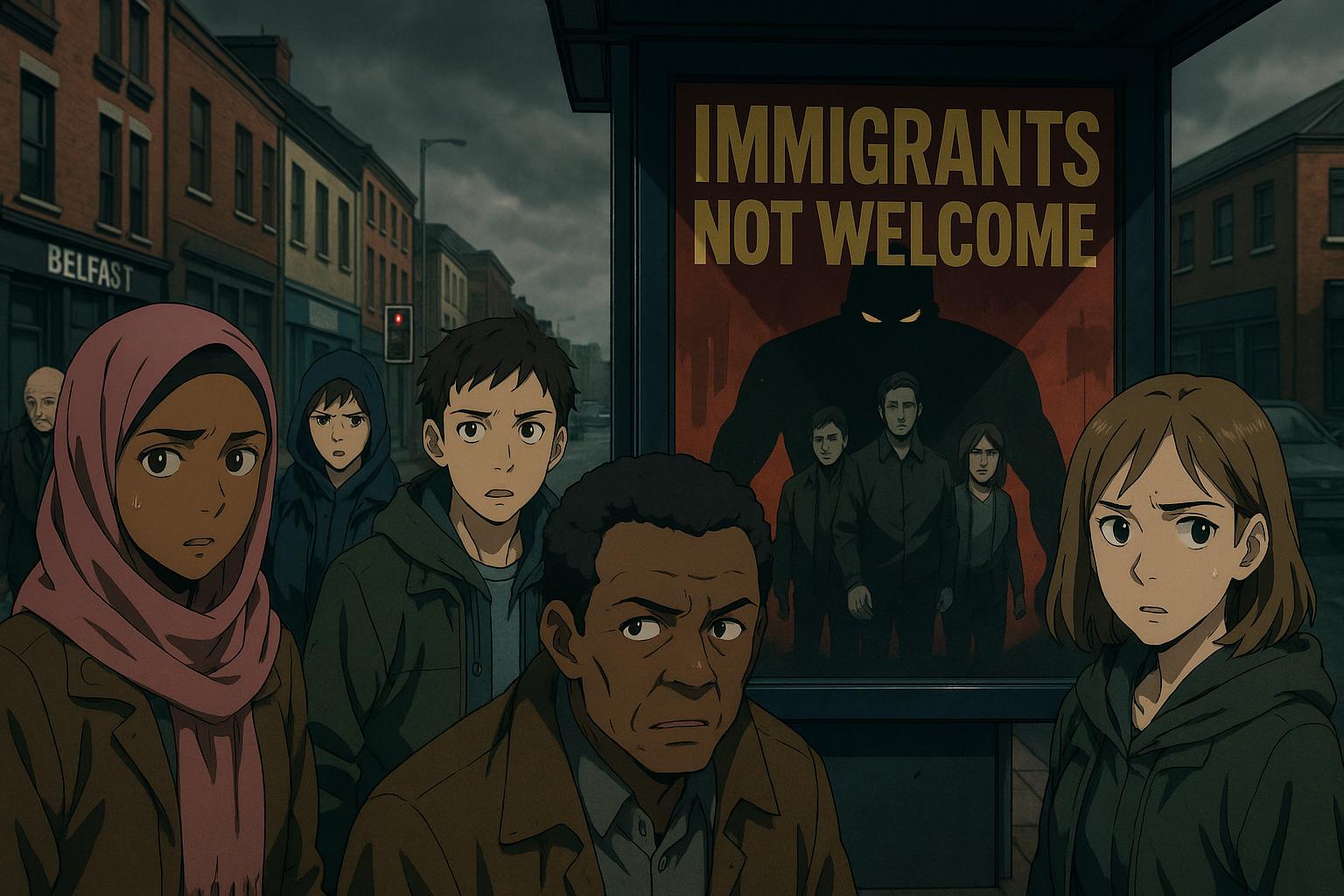Menacing posters demanding “local homes for local people” have recently appeared in a loyalist area of south Belfast, sparking concern among residents and authorities alike. The emergence of these anti-immigration messages in the Belvoir and Milltown neighbourhoods follows a troubling trend of similar sentiments escalating across Northern Ireland.
These posters, affixed to bus shelters and other public spaces, are directed at the Housing Executive as well as private landlords and housing associations involved in the community. They assert that, while these areas have historically welcomed individuals from various backgrounds, the current situation is deemed unacceptable due to a perceived shortage of housing for long-time residents. The message highlights a tension between historical hospitality and contemporary fears regarding housing scarcity, culminating in a demand for prioritising local residents.
Superintendent Finola Dornan, District Commander for South Belfast, acknowledged the community's unease regarding these developments. Addressing the harmful nature of such incidents, she stated that they “have a really damaging impact on everyone living in the local area and their sense of safety.” The police have committed to removing these posters in collaboration with local community leaders.
In November 2023, SDLP councillor Donal Lyons took action by removing similar anti-immigrant posters from the Belvoir area, denouncing them as harmful to the community’s inclusive spirit. Local reaction supported these efforts, with residents stressing their commitment to diversity and mutual respect. This echoes sentiments in other regions, such as Rathcoole in Newtownabbey, where parallel posters also emerged, prompting police intervention and community discussions about the growing anti-immigrant rhetoric.
The posters in Belvoir are not isolated incidents but are part of a broader pattern that has become increasingly visible in Northern Ireland. Anti-immigrant messages have appeared in various forms, from demands for “locals only” to outright warnings against rehousing migrants. The frequency of these occurrences raises serious questions about the narrative of community and belonging in a society striving to heal from its turbulent past.
Concerns over such exclusionary tactics are compounded by attacks on local properties where these posters have been displayed. For instance, incidents of vandalism targeting homes in Belvoir underscore the potential for social unrest stemming from these divisive messages. The Northern Ireland Housing Executive has condemned these actions, reiterating that they jeopardise the safety and security of all residents, regardless of their background.
Furthermore, even in more rural areas, anti-immigrant sentiments have manifested disturbingly. In locations such as Lurgan, alarming signs target specific demographics within schools, raising community fears about the implications of such messaging on the safety of children and families.
The observations emerging from these recent events starkly highlight a conflict between longstanding community values of inclusivity and the potent, albeit misleading, narratives surrounding immigration. While the posters call for solidarity among local residents, they simultaneously fracture the very community spirit they purport to protect. As local leaders, residents, and authorities strive to confront these challenges, the response to these divisive attitudes will ultimately determine the resilience of community ties in the face of rising exclusionary pressures.
The need for proactive engagement in promoting understanding and acceptance seems more urgent than ever, with hopes that the spirit of diversity that has, for over six decades, characterised these neighbourhoods can rise above the currents of division and negativity.
Reference Map
- Paragraphs 1, 2, 3
- Paragraphs 4, 5
- Paragraph 6
- Paragraphs 7, 8
- Paragraph 9
- Paragraph 10
- Paragraph 11
Source: Noah Wire Services
